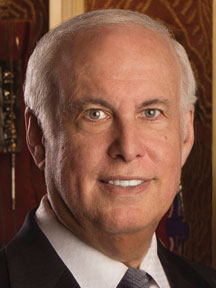 QUESTION: I understand that at this time of year the shofar is blown every day at weekday morning services. I thought the shofar was just blown on Rosh Hashanah and at the end of Yom Kippur. Can you explain this tradition?
QUESTION: I understand that at this time of year the shofar is blown every day at weekday morning services. I thought the shofar was just blown on Rosh Hashanah and at the end of Yom Kippur. Can you explain this tradition?
ANSWER: There has been a tradition that is at least a thousand years old that the shofar is blown very briefly in daily weekday morning services for the entire month prior to Rosh Hashanah. The purpose of the shofar being blown is to remind people that the High Holy Days are approaching and that one should start thinking about repentance, spiritual repair of our souls and all that this holy season is all about.
Obviously we do not blow the shofar on Shabbat — even when it is Rosh Hashanah — so we do not blow the shofar on Shabbat during this month of Elul that precedes Rosh Hashanah. There is an additional tradition that even though we blow the shofar every weekday during this month, we do not do so on the eve of Rosh Hashanah. There are several reasons for this custom. One is that on Rosh Hashanah morning we recite the prayer thanking G-d for letting us reach this season, the Shecheyanu blessing, and if we had blown the shofar every single day, why is one thanking G-d for reaching this season to blow the shofar since we did it the day before? So, the rabbis decided that there should be at least a one-day gap when the shofar is not blown so that that the blessing has some meaning. One is not even supposed to practice blowing the shofar on the eve of Rosh Hashanah.
There are different traditions between the Ashkenazic and Sefardic world as to how many notes and which notes of the shofar are blown during this month. The Ashkenazic version is the shortest, it is just four notes. The Chassidic and Sefardic world blow generally speaking 10 to 12 notes daily.
For many years when I taught the laws of shofar and the laws of the month of Elul in my synagogue or elsewhere in the community, I always made reference to the fact that the Code of Jewish Law that discusses the tradition of blowing the shofar during this time of year stated that there are congregations that blow in the evening during the month of Elul. I have been in hundreds of synagogues over the years and never have seen that and it seemed rather odd. We never blow the shofar at night. The only time we even come close to that is at the end of Yom Kippur as the day is drawing to a close and the fast is ending and it is the last second of twilight when we blow the one blast ending the fast.
A number of years ago one of my congregants who was saying Kaddish had asked me for synagogues to attend during business travels. He was going to be in New York where it is obviously easy to find a synagogue. Knowing where his meetings were going to be, I sent him to the Spanish and Portuguese synagogue. When he returned he told me that he saw something really strange. He then explained that at the end of Ma’ariv service the shofar was blown. So apparently that tradition is being kept at least in the Spanish and Portuguese community.
There are so many areas of Jewish law where local traditions and customs prevail. For example, unless one is vegan, observant Jews eat meat or fish at every Shabbat or festival meal. The blowing of the shofar during the month of Elul for the 29 days prior to Rosh Hashanah certainly falls into this area and a variety of customs prevail as to how and where in the services the shofar is blown. However, every Traditional, Orthodox and Conservative synagogue around the world does blow the shofar daily during this period of time.


